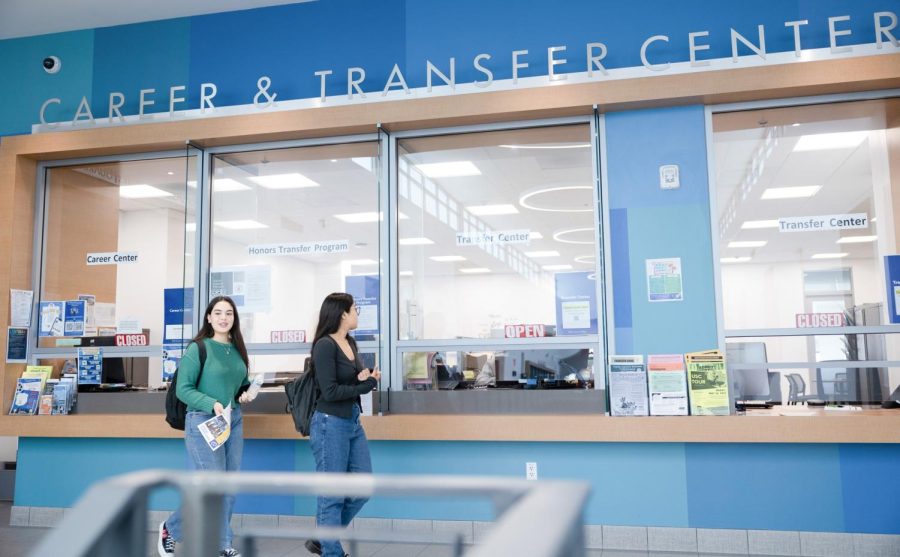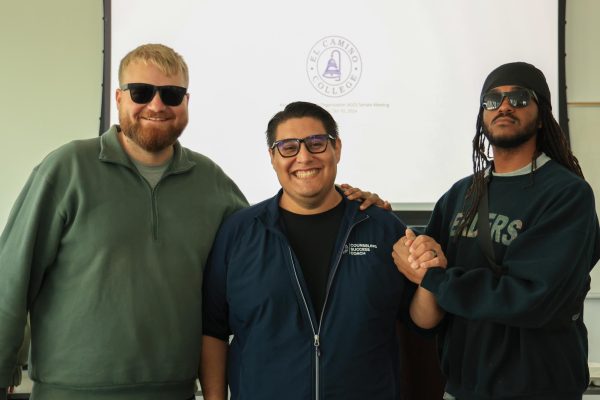Community college transfer rates decline over past decade
Transfer rates from California community colleges to California State and University California colleges between 2010 and 2019 have increased by 18 and 28% respectively.
Recently the number of four-year university transfers has not been as promising due to a variety of reasons, including students not being prepared for academics beyond community college.
According to a report by the Public Policy Institute of California in 2021, only 28% of community college students in California are considered ready for academics beyond community college based on their performance on standardized tests.
Another reason why transfer rates are low today is the decrease in students over the past reported decade, with a 20% decrease in students in California alone.
One primary reason for students’ decline is the COVID-19 pandemic and its side effect on students being forced to take classes at home. Students spend a lot of time at El Camino College contacting student support, where Nicole Cheyenne works.
Cheyenne is a student worker who works for the Humanities Division at El Camino and is involved with many students daily, she still sees the residual effects of the pandemic to this day.
“Many students also wondered if online classes would still be eligible for transfer,” Cheyenne said. “Based on the number of times I would answer those questions, at a time, I would say that about one-third to one-half of students seeking available classes in this division would make an effort to ask for confirmation as to whether those sections would be eligible for transfer.”
Having transferable classes is common for El Camino students and neighboring community college, Long Beach City College, which has had a consistent 34,000 students over the past decade.
Still a state-wide problem, Long Beach City College has seen a 45% decrease in transfers. More specifically, a 54% decrease in state transfers and a 41% decrease in out-of-state transfers.
More specific details, such as in-state and out-of-state transfer rates, have more personable reasons and make the transfer portal quite diverse in its data, especially for California, which often sees students transfer to other community colleges.
This is the case for Louis Boich, who went to school at Long Beach City College just two semesters prior and is now attending El Camino College, undecided in his major.
“I have been doing my transferable general education classes so far,” Boich said. “ I started at Long Beach (City College), but I wanted to be closer to home and not have to drive as long to campus, so I decided to transfer to El Camino.”

The students who attend community colleges in California are seeing a decline in transfer rates and the total staff for community colleges statewide.
California has seen a one percent decrease over a decade, but colleges, specifically Glendale Community College, have seen an eight percent decrease in total staff from 2011 to 2022.
Investing resources into community colleges has been a more prominent debate since the pandemic. Still, it has nevertheless been talked about before and, more specifically by former Chancellor of the California Community Colleges Eloy Ortiz Oakley.
“I have said before, community colleges are crucial for our state’s higher education system, and we need to invest in them if we want to see more students transfer to four-year universities,” Oakley told a Union reporter via Zoom call in March.
The prevalent issue that plagues colleges, in general, is the tuition that comes with attending a school, whether that is a community college or not. In a survey conducted by the RP Group for former California community college students, almost a third of former students did not reenroll due to prioritizing work to juggle other commitments and tuition costs.
More specifically, 22% was due to other obligations, while another 29% struggled to keep up with classes and the costs.

Raymond O’keefe is a student at El Camino who is majoring in business but is looking to find work during his off time in sports to afford college.
Raymond just finished his years of athletic eligibility in the fall and is still attending El Camino as a student looking for a scholarship out of state for football. Still, he also is looking to work to provide for his family and his school costs.
“I would try to transfer, but with no scholarship or anything, I simply can’t afford it,” O’keefe said. “I have some interest from out-of-state colleges, but I want to be able to stay close to home and help my mom financially and simply be home.”
According to the California Community College Athletic Association, the student-athlete faces more of a challenge when it comes to out-of-state transfers or in-state with over 26,000 student-athletes participating annually in intercollegiate athletics at California’s community colleges.
Most student-athletes participating at a California community college transfer to a four-year college or university to continue their academic and athletic careers once again, according to the CCCA.
Current El Camino college athlete Jason Davis is currently doing general arts and humanities studies and looking towards the next level.

Davis is playing summer baseball in Canada in order to improve his chances of getting to look for scholarship offers from four-year colleges when he leaves El Camino.
“I felt it was the best option. I still have more to prove if I want to go to the next level,” Davis said.
With most students, such as Davis, transferring out of state the number of students who transfer out of El Camino has only seen a 22% percent decrease to the in-state transfer count seeing a 48% decrease from 2011 to 2022.
In the grand scheme for community colleges in California, the reality is since the pre-pandemic in 2019, the state as a whole, which is all 115 community colleges, has lost about 18% or put in a more significant number of around 300,000 students.
If changes are not made there could be dire consequences for students in the future.
Editor’s Note: Updated lead to reflect more accurate transfer information on June 14.









